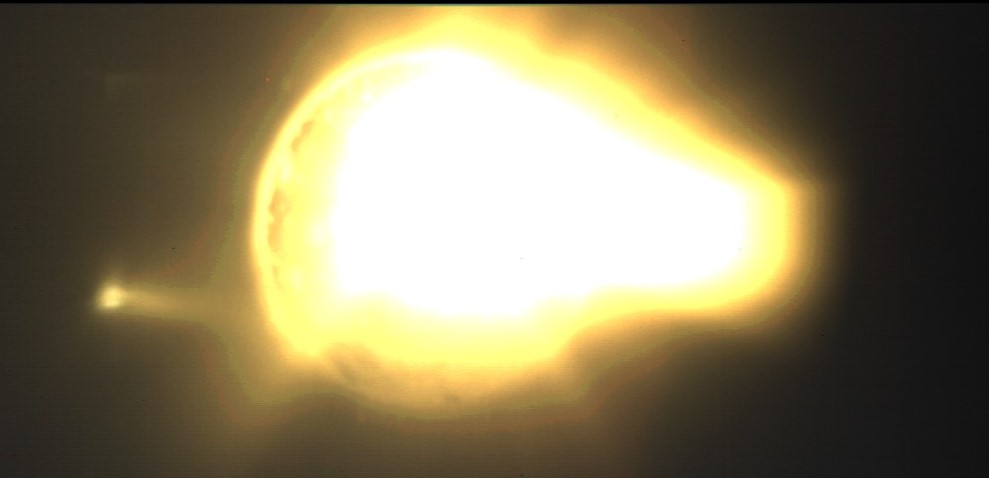
An SEM image of an MGS-1 Martian analogue that had been mixed with water, frozen and impacted at 4.8 km/s.
Most planetary bodies experience large fluctuations in their temperature, harsh cosmic irradiation and crater forming impacts. Understanding the chemical and mineralogical modification of planetary materials by thermal and impact (shock) processing is therefore crucial for the interpretation of samples retrieved by current and future space missions. A suite of analytical techniques (XRD, SEM-EDS, Raman spectroscopy, AES and XRF) will therefore be used to characterise thermal and shock processed planetary analogue materials. Temperature variation will be mimicked using a cryogenic cold finger under high vacuum, with shock processing achieved using a light gas gun to simulate hypervelocity projectile impacts of meteoroids.

A high-speed photograph of the emitting plume generated during the hypervelocity impact (4.7 km/s) of a JSC-1 Lunar analogue mixed with CO2 ice.
For more information about this project contact Dr Jon Tandy.